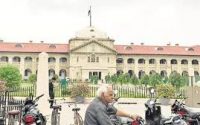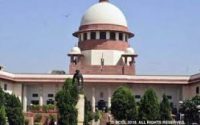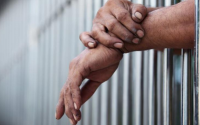‘Satisfactory answer about Gumnami Baba will be true tribute to Netaji’
Source – hindustantimes.com
As the nation celebrates the 123rd birth anniversary of freedom fighter and Indian National Army leader Netaji Subhas Chandra Bose on January 23, the mystery around the identity of Gumnami Baba alias Bhagwanji, whom many believed was Bose, continues to evoke curiosity.
Some people feel a satisfactory answer to the questions being raised about Justice (retired) Vishnu Sahai Commission’s conclusion that Gumnami Baba alias Bhagwanji was not Bose will be the true tribute to Netaji in independent India, or else the mystery will deepen in the years to come.
The state government had placed the report of the one-man inquiry commission before the state legislature in Lucknow on December 19, 2019.
Although many commissions have been set up from time to time to resolve the issue, a large section of people continue to question the claim that Bose died in an air crash in 1945. Many of them believe that
Gumnami Baba and Bose are the same person.
The commission’s conclusions have added to the mystery over the issue, those with a keen interest in the matter feel.
They cite reports of experts claiming that the handwritings of Gumnami Baba matched that of Bose. They have also questioned DNA reports claiming a mismatch between the two persons.
Gumnami Baba lived in a part of Ram Bhawan, Faizabad (now Ayodhya) from December 1982 till September 16, 1985, when he died. His last rites were performed at the Guptar Ghat in Faizabad (now Ayodhya) on September 18, 1985.
The Allahabad high court had given orders to set up the commission on January 31, 2013 on writ petition number 929 (M/B)/1986 Ms Lalita Bose and others versus UP state and writ petition number 10877 (M/B)/2010 Subhash Chandra Bose Rashtriya Vichar Kendra, Faizabad, versus UP state. The Justice (retired) Vishnu Sahai Commission was thereafter set up under the provisions of Commission of Inquiry Act 1952 on June 28, 2016 to ascertain the identity of Gumnami Baba alias Bhagwanji.
“Justice Sahai has carried out a perfunctory, unscientific…inquiry, going against the spirit of the Allahabad high court order of 2013, which, in the light of credible claims that Gumnami Baba could have been Netaji, wanted to ascertain who the Baba was,” said Chandrachur Ghose and Anuj Dhar, authors of the 2019 book “Conundrum: Subhas Bose’s Life After Death”.
Both of them said the Sahai commission did not conduct any detailed study of the documentary evidence from the material that was recovered from Ram Bhawan.
“The commission made no attempt to carry out even a cursory study of correspondence of the Baba found at Ram Bhawan. Of all the important letters, the only one he found worth credence was from a teenager ‘Bulbul’. If a genuine search and investigation were done, letters from stalwarts of the freedom movement, who were very close to Subhas Chandra Bose for decades, like Leela Roy, Pabitra Mohan Roy, Trailokya Nath Chakravarty etc, would have clearly shown that they ‘knew’ that Gumnami Baba was none other than Netaji,” the authors said.
The authors also said, “A commission of inquiry has the status of a court and the Sahai Commission could have easily got the handwritings and the DNA reports examined afresh. The commission should have gone for fresh DNA tests and handwriting examination in view of reports of handwriting experts who have matched their handwritings.”
“On the basis of a DNA analysis report submitted by the Kolkata-based Central Forensic Science Laboratory (CFSL), justice Mukherjee Commission had concluded that the DNA found from the teeth did not match with that of the paternal and maternal relatives of Netaji. The Hon’ble Allahabad high court, however, has pointed out a fallacy in the assumption of the justice Mukherjee Commission of Inquiry that the set of teeth were of Gumnami Baba. The Mukherjee Commission did not discuss any evidence or recorded a finding that five teeth found in Ram Bhawan, and sent for DNA test, were of Gumnami Baba or Bhagwanji and who were the persons, who retained the teeth of Bhagwanji after cremation,” the authors said.
“Despite emphasis by the high court on scientific inquiry, Justice Sahai refused to have new handwriting and DNA tests carried out,” they claimed.



